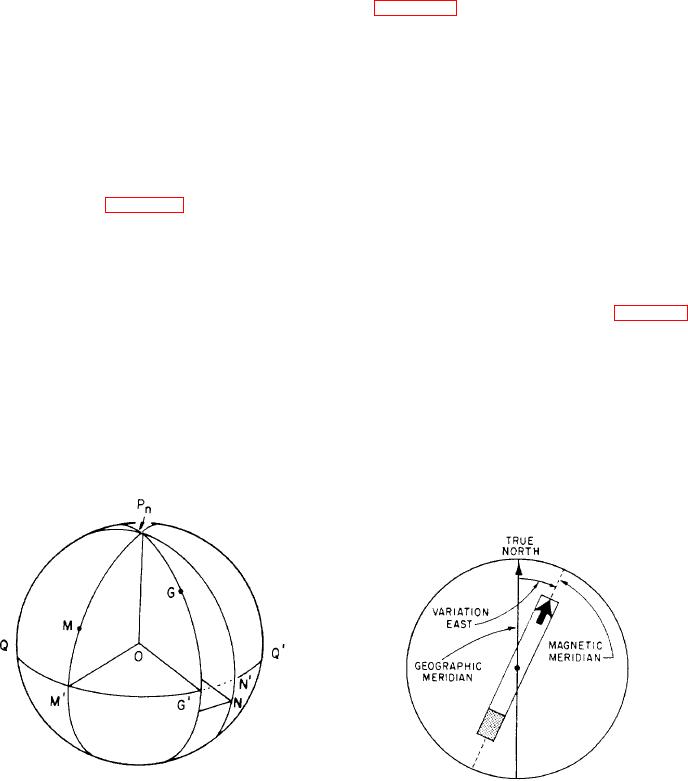
circumference QPnQPs represents a meridian.
You measure latitude from a standard great
QQ represents the equator, whose plane passes
circle (the equator). You also use a standard great
through the axis of rotation. Let M be some
circle when measuring longitude. This great
position north of the equator on a meridian. The
circle is the meridian. The standard meridian is
number of degrees in arc QM is the measure of
the prime meridian. By international agreement
angle QOM. If arc QM is 30, then angle QOM
in 1884, the meridian adopted as the prime merid-
is 30. Thus, you measure a central angle by
ian was the one on which Greenwich Observatory
measuring its subtended arc.
(near London, England) was located. This is was
Let MM be the plane of a small circle parallel
the 0 longitude.
to QQ, the equator. Then arc QM measures the
Figure 7-6 represents the earth. QQ is the
distance of any point on MM from the equator.
equator, with its plane passing through the center,
You can describe the whole parallel MM by
O. G is the position of Greenwich, and M is a
saying that it is 30 north of the equator.
position in north latitude west of Greenwich.
Similarly, you can say any point on NN is 45 south
PnM and PnG are portions of the meridians
of the equator. The angular distance of a
through M and G intersecting the equator at M
position north or south of the equator is the
and G. The longitude of M includes
position's latitude. You measure latitude north-
ward or southward through 90 and label it N or
1. the arc of the equator GM,
S to show the direction of measurement. You
2. the angle GPnM formed by the meridional
express latitude in terms of the angle at the center
planes through G and M, and
(see angle QOM in figure 7-5). Latitude, then, is
3. the angle GOM formed at the center
the north-south geographical coordinate.
between G and M.
The east-west geographical coordinate is
longitude. You can define longitude in three
You should recognize that each of these expres-
ways:
sions measures the same coordinate--longitude.
The longitude of a position is also described
1. as an arc of the equator or a parallel,
as being east or west of Greenwich. In figure 7-6,
2. as the angle at the pole or the angle at the
the longitude of M is west; the longitude of N is
center between the planes of the prime meridian,
east. You can see that longitude east or west
and
cannot exceed 180.
3. as the meridian of a point on earth. You
You can subdivide the degree into smaller
measure this point eastward or westward from the
units, as in the decimal system. However, the
prime meridian through 180. Label it E or W
more common method of subdivision is to divide
to show the direction of measurement.
each degree into 60 minutes () of 60 seconds ()
each. Another method is to divide the degree into
60 minutes and tenths of minutes.
Figure 7-6.--Longitude is measured between meridians.
Figure 7-7.-Easterly magnetic variation.
7-4

